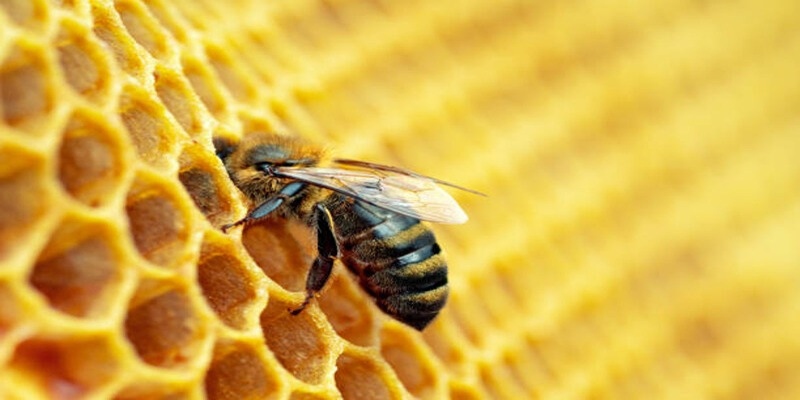Hair removal is a common grooming practice for individuals of all genders, driven by personal hygiene, cultural norms, and aesthetic preferences. Shaving and waxing stand out as popular methods to achieve smooth, hair-free skin effectively. This comprehensive guide will explore the nuances of shaving and waxing, covering their techniques, advantages, disadvantages, and tips for optimal results.
Hair removal is key in modern grooming practices
In today's society, the pressure to adhere to specific beauty standards has intensified. Smooth, hair-free skin is now synonymous with attractiveness and femininity, prompting many to remove body hair for acceptance and confidence. Consequently, hair removal has become a crucial aspect of contemporary grooming for both genders.
Hair removal is ingrained in various cultures, some of which enforce strict hair removal practices as part of tradition. Apart from personal and cultural motives, hair removal is often mandatory in certain professions like modeling, bodybuilding, and competitive sports.
Shaving: The Basics
Shaving is perhaps the most accessible and widely practiced method of hair removal. It involves using a razor or similar tool to cut the hair off at the skin's surface. Here's a breakdown of the key elements of shaving:
Equipment:
- Razor: Choose between disposable razors, cartridge razors, or safety razors, depending on your preference and skin sensitivity.
- Shaving cream or gel: Using a lubricating agent helps reduce friction and irritation during shaving.
- Aftercare products: Aftershave lotion or moisturizer can soothe the skin and prevent irritation.
Technique:
- Start by wetting the skin and applying shaving cream or gel to the area to be shaved.
- Use gentle, short strokes in the direction of hair growth to minimize irritation.
- Rinse the razor frequently to prevent clogging and maintain sharpness.
- After shaving, rinse the skin thoroughly with cool water and apply aftershave or moisturizer.
Pros and Cons:
- Pros: Shaving is quick, convenient, and painless when done correctly. It's also suitable for various body parts.
- Cons: Shaving only removes hair at the surface level, leading to faster regrowth and potential irritation, razor burn, or ingrown hairs.
Preparation steps:
- Exfoliate before shaving to remove dead skin cells and minimize the risk of ingrown hairs.
- Take a hot shower or apply a warm compress to soften the hair and open up pores, making it easier to shave.
- Use a clean, sharp razor to achieve a closer and smoother shave without causing irritation.
- For sensitive areas such as the bikini area, use a razor specifically designed for that area or consider using an electric trimmer instead.
Waxing: The Comprehensive Approach

Waxing offers a longer-lasting solution to hair removal by uprooting hair from the follicle. While it may be more time-consuming and require some skill, many prefer waxing for its smooth results. Here's what you need to know about waxing:
Types of Wax:
- Hot wax: When heated before application, hot wax melts to a precise temperature, allowing it to adhere effectively to the hair follicles. Once applied, the wax is gently removed with cloth strips, leaving the skin smooth and hair-free.
- Cold wax: Pre-applied to strips and pressed onto the skin, cold wax offers a convenient hair removal method. With no heating required, the wax is then swiftly pulled off, leaving the skin smooth and hair-free.
Technique:
- Ensure the skin is clean and dry before applying wax.
- Heat hot wax to the recommended temperature and spread it evenly over the skin in the direction of hair growth.
- Press a cloth strip onto the wax and smooth it down firmly.
- Quickly pull the strip against the direction of hair growth to remove the wax and hair in one swift motion.
- Repeat the process until the desired area is hair-free.
Pros and Cons:
- Pros: Waxing is a popular hair removal method known for its longer-lasting results compared to shaving. By pulling hair out from the root, waxing can slow down regrowth, leading to finer and softer hair over time. The process involves applying a layer of wax to the skin, which adheres to the hair and is then pulled off quickly to remove unwanted hair.
- Cons: Waxing can be painful, particularly for individuals with sensitive skin as the process involves pulling hair out from the roots. Moreover, to ensure effective hair removal, it is essential for the hair to be a certain length before waxing. While the results are smooth skin, temporary redness or irritation may occur due to the process.
Exfoliating and moisturizing:
To prevent ingrown hairs and maintain smooth skin, exfoliating and moisturizing are essential steps in the hair removal process.
- Exfoliating: Removing dead skin cells through exfoliation before shaving or waxing is a beneficial step in a skincare routine. This process not only helps in preventing ingrown hairs but also promotes a closer shave or smoother waxing experience. To exfoliate effectively, consider using gentle scrubs or loofahs on your skin 1-2 times a week, especially before any hair removal treatment. This practice can enhance the overall smoothness and appearance of your skin.
- Moisturizing: After meticulously removing unwanted hair, gently massage a soothing moisturizer onto the skin to alleviate any irritation and maintain optimal hydration levels. Opt for non-comedogenic products, ensuring they do not clog pores, and steer clear of heavily scented lotions that could potentially exacerbate any existing irritation or discomfort. Taking these careful steps will help nurture your skin post-hair removal, leaving it feeling refreshed and healthy.
Care for irritated or broken skin:

Hair removal methods, particularly waxing and shaving, can sometimes result in skin irritation or cuts. If this occurs, there are a few steps you can take to alleviate discomfort and promote healing:
- Cleanse: Use lukewarm water and a mild cleanser to gently wash the affected area.
- Apply a cold compress: Placing a cold compress or ice pack on the irritated skin can help reduce swelling and soothe any pain.
- Apply aloe vera: The natural anti-inflammatory and soothing properties of aloe vera make it an excellent option for promoting healing of irritated or broken skin.
- Avoid further irritation: Refrain from using any harsh products, hot showers, or tight clothing over the affected area to avoid further irritation and promote healing.
By following these tips, you can help soothe any discomfort and promote faster healing of irritated skin. Remember to always consult a healthcare professional if the irritation persists or becomes severe.
When to seek professional assistance?
While both shaving and waxing can be done at home, some individuals may prefer or benefit from seeking professional assistance. This can include:
- Those with sensitive skin or allergies to certain hair removal products.
- Individuals with pre-existing skin conditions that could be worsened by hair removal.
- Those looking for a more precise and thorough job, particularly for difficult-to-reach areas.
- Those seeking a more long-term solution, such as laser hair removal or electrolysis.
The choice of hair removal method is a personal one that depends on factors such as time, budget, and individual preferences. By understanding the various techniques and following the necessary precautions and aftercare tips, you can achieve optimal results with your chosen method.
Conclusion:
Shaving and waxing are two popular methods of hair removal, each offering its own set of benefits and drawbacks. By understanding the techniques, pros, and cons of each approach, you can make an informed decision based on your preferences, skin type, and desired results. Whether you opt for the quick convenience of shaving or the longer-lasting smoothness of waxing, proper preparation and technique are key to achieving the best outcome for your grooming routine.







